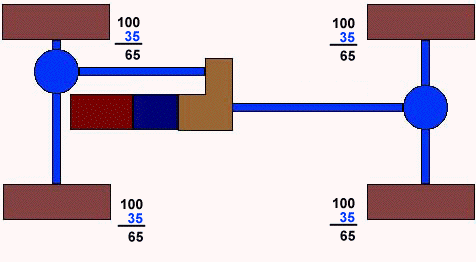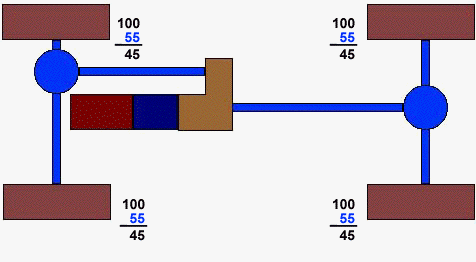
In a 4WD system the engine's torque is not sent to two tires (each would carry 50% of the torque load) - torque is sent to all 4 tires (each tire carries 25% of the torque load) utilizing the traction of all 4 tires. 4WD does not give you more traction - it simply uses more of the available traction (each tire on the ground provides traction). So, in 4WD traction of 4 tires (traction value 400) is used to create forward movement instead of using the traction of only 2 wheels (traction value 200). Since a torque value of 140 is needed to move the car - a safety margin of 260 remains when in 4WD.

Lets say due to slippery ground the traction value drops to 50 per tire. That adds up to 200 usable units at the 4 powered tires - and with 140 torque units needed for forward movement, a reserve of 60 traction units remains. Forward movement is guaranteed.
In 2WD (traction would add up to 100 units) the 2 tires would start spinning, because the 140 torque units would "overpower" the 100 traction units - forward movement would cease.

If for some reason (vehicle heavily loaded and steep grade needs to be climbed) much more torque (lets say 220 units) is needed to move the vehicle. Since twice as much traction as in 2WD can be used (400 units of traction are available on dry surface) the account still shows a reserve of 180. The steep grade can be climbed without any spinning tires.
In 2WD (traction would add up to 200 units) the 2 tires would start spinning, because the 220 torque units would "overpower" the 200 traction units - forward movement would cease.
The "pumpkins" in the picture above are the differentials.